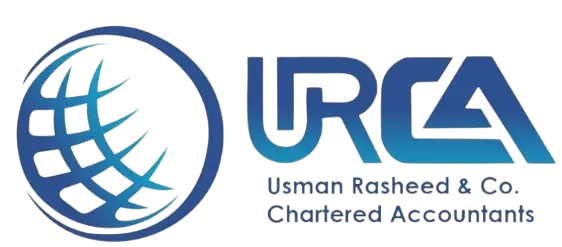How to Read Financial Statements: A Complete Beginner’s Guide to Financial Reporting
Financial statements are essential documents that provide a snapshot of a company’s financial health. Whether you are an investor, a business owner, or just someone interested in understanding financial reports, knowing how to read financial statements can help you make informed decisions. This guide will break down the key components of financial statements according to International Financial Reporting Standards (IFRS) in a simple and easy-to-understand manner.
Understanding IFRS
IFRS is a set of accounting rules and guidelines used by companies worldwide to prepare and present financial statements. The goal of IFRS is to ensure consistency, transparency, and comparability of financial statements across different countries and industries.
Financial statements under IFRS typically include:
- Statement of Financial Position (Balance Sheet)
- Statement of Profit or Loss (Income Statement)
- Statement of Cash Flows
- Statement of Changes in Equity
- Notes to the Financial Statements
Let’s explore each of these in detail.
1. Statement of Financial Position (Balance Sheet)
The balance sheet provides a snapshot of a company’s financial position at a specific point in time. It is divided into three key sections:
a) Assets
Assets are what a company owns and can be classified as:
- Current Assets: Cash, inventory, accounts receivable (money owed by customers), and other assets that can be converted into cash within a year.
- Non-Current Assets: Property, machinery, patents, trademarks, and long-term investments.
b) Liabilities
Liabilities represent what a company owes. These include:
- Current Liabilities: Short-term debts, accounts payable (money owed to suppliers), and taxes payable.
- Non-Current Liabilities: Long-term loans, bonds, and other financial obligations payable beyond one year.
c) Equity
Equity is the residual interest in the company after deducting liabilities from assets. It consists of:
- Share Capital: Money raised from issuing shares.
- Retained Earnings: Profits reinvested into the business instead of being distributed as dividends.
Formula:
This equation must always balance, hence the name “Balance Sheet.”
2. Statement of Profit or Loss (Income Statement)
The income statement shows a company’s financial performance over a period (e.g., a quarter or a year). It reports:
a) Revenue (Sales)
This is the money a company earns from selling goods or services.
b) Cost of Goods Sold (COGS)
These are direct costs incurred to produce the goods or services sold.
c) Gross Profit
This shows how much money remains after covering production costs.
d) Operating Expenses
These include rent, salaries, marketing, and administrative expenses.
e) Operating Profit (EBIT)
EBIT stands for Earnings Before Interest and Taxes.
f) Net Profit (Bottom Line)
This is the final profit after all expenses.
A positive net profit means the company is making money, while a negative net profit means it is operating at a loss.
3. Statement of Cash Flows
This statement shows the movement of cash in and out of a business. It is divided into three sections:
a) Cash Flows from Operating Activities
This includes cash received from sales and cash paid for expenses such as salaries, rent, and supplies.
b) Cash Flows from Investing Activities
This covers cash spent on or received from buying and selling assets like property and equipment.
c) Cash Flows from Financing Activities
This involves cash flows related to raising or repaying debt and issuing shares.
A positive cash flow means the company has more cash coming in than going out, which is a good sign.
4.Statement of Changes in Equity
This statement shows changes in the company’s equity over time. It includes:
- Profits or losses for the period.
- Dividends paid to shareholders.
- New shares issued.
- Other gains or losses directly affecting equity.
5.Notes to the Financial Statements
The notes provide additional details and explanations about the financial statements. They include:
- Accounting policies used.
- Breakdowns of specific items (e.g., details of loans, depreciation methods etc).
- Any potential risks or uncertainties the company faces.
How to Analyze Financial Statements
1. Liquidity Ratios (Measures short-term financial health)
- Current Ratio = Current Assets / Current Liabilities (A ratio above 1 is good.)
- Quick Ratio = (Current Assets – Inventory) / Current Liabilities (A stricter liquidity measure.)
2. Profitability Ratios (Measures how well the company is generating profit)
- Gross Profit Margin = (Gross Profit / Revenue) × 100 (Higher is better.)
- Net Profit Margin = (Net Profit / Revenue) × 100
- Return on Equity (ROE) = (Net Profit / Equity) × 100
3. Solvency Ratios (Measures long-term financial stability)
- Debt-to-Equity Ratio = Total Liabilities / Equity (Lower is safer.)
- Interest Coverage Ratio = EBIT / Interest Expense (Higher means the company can easily pay interest.)
4. Cash Flow Analysis
- Check if operating cash flow is positive and growing.
- Ensure the company is not overly dependent on financing activities for cash.
Conclusion
Understanding financial statements is crucial for making informed business and investment decisions. The IFRS framework ensures consistency and transparency, making it easier to compare companies globally. By focusing on key financial metrics and understanding the components of financial statements, you can assess a company’s financial health effectively.
Next time you look at a company’s financial report, take your time, follow these steps, and you’ll be able to make sense of the numbers with confidence!
About Us
Usman Rasheed & Co Chartered Accountants is a leading financial advisory and audit firm in Pakistan, having offices in Islamabad, Quetta, Lahore, Karachi, Peshawar & Gilgit. The firm is providing Audit, Tax, Corporate, Financial, Business, Legal & Secretarial Advisory services and other related assistance to local and foreign private, public and other organizations working in Pakistan
